Sadhus: indian holy men with a unique link to cannabis

Rooted in mysticism, deep tradition, and unwavering dedication, sadhus are holy men who have renounced their earthly life. Devoted to a path of spiritual discipline by relinquishing themselves of modern conveniences, they perform religious acts or blessings for the aid of others.
Rooted in mysticism, deep tradition, and unwavering dedication, sadhus are holy men who have renounced their earthly life.
Devoted to a path of spiritual discipline by relinquishing themselves of modern conveniences, they perform religious acts or blessings for the aid of others. Part of the religion of Hinduism, sadhus are sometimes referred to as jogi or vairagi.
WHAT IS A SADHU?
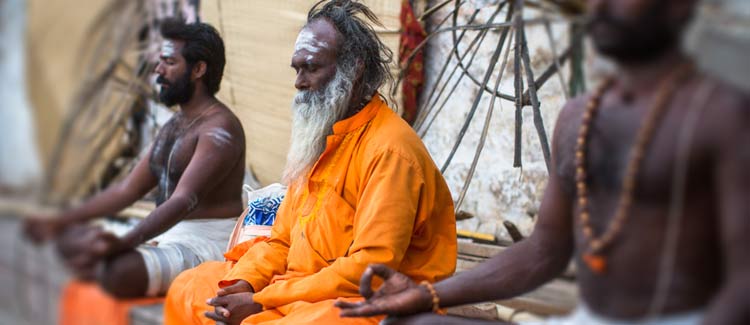
The journey to becoming a sadhu starts with Hindu belief in the four phases. These four different stages in life or “ashramas” are something practising Hindus are ideally meant to experience.
The first stage is becoming a student; the second phase is becoming a homeowner; the third phase, becoming a hermit. The fourth phase is about removing oneself from urban environments to undertake religious practices.
Many Hindus complete the first three phases, with the fourth requiring significantly more sacrifice—complete devotion to their god, having no attachment to family, their home, desires, or responsibility.
With such dedication comes the title of sadhu, revered by Hindus as representatives of the gods. Despite the life-altering decision to pursue the fourth phase, there are believed to be five million sadhus belonging to thousands of different schools, or sects.
SADHU SECTS
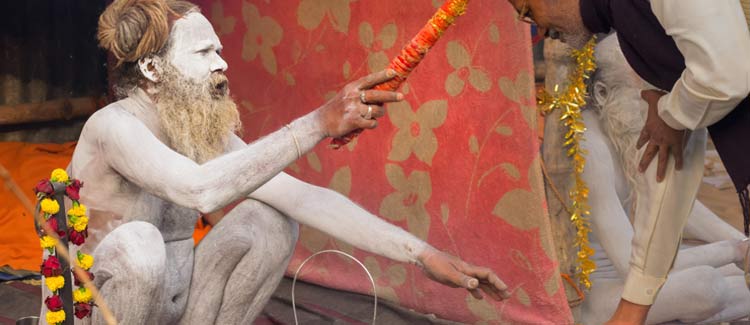
Hinduism involves a sophisticated collection of sects and subsects based on different lineages and philosophical schools or traditions. Some are devoted to Shiva, while others dedicate themselves to Vishnu or Shakti. All of these gods have something in common—they are part of Brahan.
Brahan is the genderless principle of ultimate reality. None carry any power over the other, although within sects, there is an understanding of hierarchy. During times of prayer at shrines, different sects also undertake different actions.
Typically, sadhus wear very little clothing, a sign of the possessions they have renounced. They also have long, coiled hair, with some covering themselves in ash or decorated in religious markers across their bodies.
They will often wander alone, carrying only a begging staff and pot. sadhus survive on donations of food provided for their blessings or prayers.
SADHU LINK TO CANNABIS
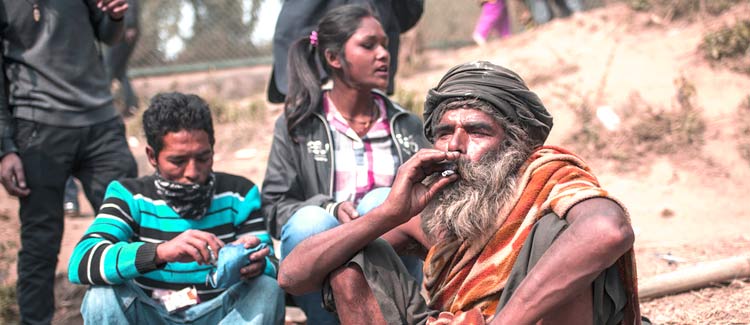
How does a holy man devoted to the god of their sect come to be linked to cannabis? In Hinduism, or more specifically, in India, marijuana has been a part of the culture for thousands of years.
Shiva is the god most commonly linked to cannabis, with religious stories often referencing how Shiva used cannabis to sustain themselves. Sadhus use it in religious ceremonies, with cannabis revered for its role in holy festivities.
Sadhus consume cannabis by smoking it, most likely in a chillum, but sometimes a special drink is prepared called 'Bhang'.
The use of cannabis provides the sadhu with a link to their gods, although the legality in India is a confusing and often unpoliced topic. India’s climate lends itself to the natural growth of cannabis, and as such, it is freely available, especially in rural regions.
Cannabis is also used as an aid to meditation, something many of us will be able to relate to. The most profound moments of clarity come when enjoying weed, although our devotion and commitment are incomparable to practising sadhu.
SADHU LIFESTYLE AND TRADITIONS
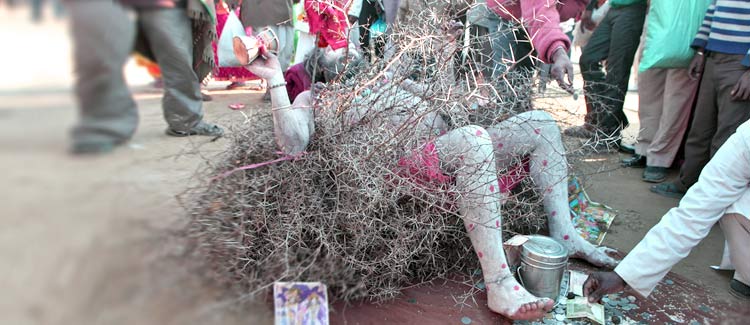
There is no particular act or tradition that any one sadhu must undertake; it is all linked to the specific sect and their beliefs. As a result, while some may roam the land, only seeking shelter when required, others take respite in monasteries or shrines.
What many people know sadhus for are their acts of penance. Hindus believe that by undertaking these extreme acts, they will break free from the endless cycle of death and rebirth.
These acts are another sign of their unwavering servitude. Some sadhus have buried themselves alive, while others have taken vows of silence or stood without rest. One sadhu stayed in the same spot while being silent for 22 years. Another, Swami Maujgiri Maharaja, stood for 17 years, leaning against a plank when he slept.
KATHMANDU SHRINE
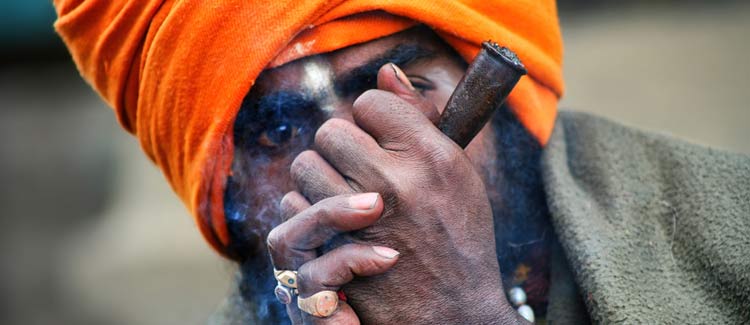
At a symbolic Hindu festival called Maha Shivaratri, thousands of people gather at the Kathmandu shrine to take part in religious festivities. Unique to this festival is the fact that Nepal lifts its ban on cannabis for the duration. Since the ‘70s, Nepal has made changes to try and prohibit the use of cannabis.
However, using chillums, a small hookah-like pipe, the drug is consumed much like it would have been thousands of years ago. Part of Indian culture, tradition, and history, cannabis does not carry the same negative stigma modern society has created. Instead, the act of smoking weed is seen as a means of spiritual enlightenment, an action handed down by the gods.




